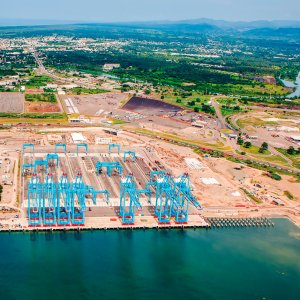In Construction, Local Firms Cannot Rest on Laurels

STORY INLINE POST
Q: What is CMIC’s impact on the development of the construction industry and its members?
A: The construction industry is one of the most important and dynamic sectors in the country. It creates 8.1 percent of GDP and creates over 6.1 million direct jobs, or 13.3 percent of total employment. For every MX$100 (US$5.2) invested in construction, MX$45 (US$2.3) are used for the purchase of materials and services. CMIC’s members have a great impact on the development of engineers, ensuring that they have long-term contracts to create continuity in employment and that they receive continuous training and education. In Mexico, it is mandatory for companies to provide training to all employees. The construction industry is the only one that has created a training school for constructors, which is the Training Institute for the Construction Industry (ICIC). This will ensure that workers have a better income and a secure job throughout the years.
One of the chamber’s main goals for 2016 is the development of MSMEs in the construction sector. CMIC wants to collaborate with organizations like NAFIN and BANOBRAS to provide these companies with better investment loans and financing so they can become more efficient and productive. For MSMEs to become large companies, it is crucial that workers receive adequate training.
Q: How will foreign companies affect the development of the local construction sector?
A: The number of projects and investment in the country has created numerous opportunities for companies to develop. Mexican businesses cannot rest on their laurels because foreign players will inevitably enter the fray and seize the most attractive opportunities. This is relevant to any company because naturally all players want growth for their industry and an industry can only grow on the strength of its companies. The same applies to the construction sector. This segment is directly linked to other industries due to the technology and materials needed for each project. Mexico’s construction sector is composed 95 percent of MSMEs, which means the number of large companies is small. It is vital that businesses develop so that large projects can be taken on by Mexican firms.
The structural reforms apply to the telecommunications and energy sectors, allowing the country to compare its needs for growth to the rest of the world. Countries measure performance according to GDP and the construction sector’s GDP is usually higher than the rest. The industry needs to grow to its potential of 4-5 percent annually from 3 percent now. The government is creating new policies and programs that promote the development of human capital, technology and financing as well as designing a framework that will support the growth of MSMEs and promote strategic alliances that will help companies become more competitive at the national and international levels.
Q: What role should the government and private sector play to boost the development of infrastructure projects?
A: The government should be a facilitator so that the private sector can enter the industry and invest money. It should distribute funds according to the distinct needs of the population to strengthen productive infrastructure as well as to foster higher levels of productivity and competition within the industry. When foreign companies arrive here, they should enter with the intention of creating strategic partnerships through which they bring investment and new work methods. Foreign players come to Mexico for its affordable labor force and the expertise of the market. As for Mexican companies, they look for foreign firms that will contribute capital and innovative technology. For instance, in the energy industry there are only a few companies that exploit hydrocarbons. Mexico can learn from the expertise of other countries.
We are not opposed to the entry of foreign companies but there must be clear and efficient regulations. The private sector represents 75 percent of the total investment for infrastructure in the construction sector. Infrastructure budget cuts will open stronger opportunities for private investment in the segment. At the moment, there are two ways in which the private sector can participate in PPP projects. One is through tendering processes established by the government and the other is through unsolicited proposals in which the private sector identifies investment projects and aligns them with governmental strategies. These methods of participation have various benefits, such as the development of infrastructure for the public and private sectors, the development of more efficient projects, construction, design and maintenance. It also spreads the risk to multiple parties. Most of this funding comes from abroad, which demonstrates that investment risk is low in the country.
Q: How does CMIC view the new infrastructure financing options and what role is it playing in their implementation?
A: Budget cuts have led to the creation of new investment vehicles that are creating opportunities for the private sector. These new instruments are meant to optimize the social and economic benefit of developments in Mexico. CMIC works closely with the public sector to ensure the diffusion of these financial tools as well as the transparency of the plans.
CKDs have become the most successful financial vehicles for the construction of infrastructure. Since its launch four years ago, investment in CKDs has totaled MX$120 billion (US$6.3 billion), of which the majority has come from AFOREs. These tools can be used to finance real estate, mining and a variety of infrastructure such as airports, highways, ports, water and energy projects.
These tools have helped create an optimistic outlook for Mexico’s infrastructure industry. CKDs are attracting a great deal of foreign investment in the energy, infrastructure and telecommunications markets. Although these vehicles create opportunities for financial support, it is crucial that we find a way to increase transparency and boost diversification in the industry.
Q: How can MSMEs gain access to financial support in the next few years?
A: MSMEs were the backbone of the economy in 2012, generating 33 percent of GDP, 99.8 percent of businesses and creating over 70 percent of the country’s jobs. Nevertheless, MSMEs in the construction sector have not fully developed due to the lack of financing. CMIC has fostered strategic alliances with the Ministry of Finance and NAFIN to create specific financing programs for construction companies. These programs provide support for work capital and the acquisition of fixed assets through loans up to a maximum of MX$15 million (US$789,473) and interbank interest rates of +10. We also joined forces with Bancomer, Santander, Bx+, Banamex, Banregio and Multiva to provide construction companies with preferential interest rates that are backed by MX$300 million (US$15.7 million) in guarantees provided by the Ministry of Finance.























